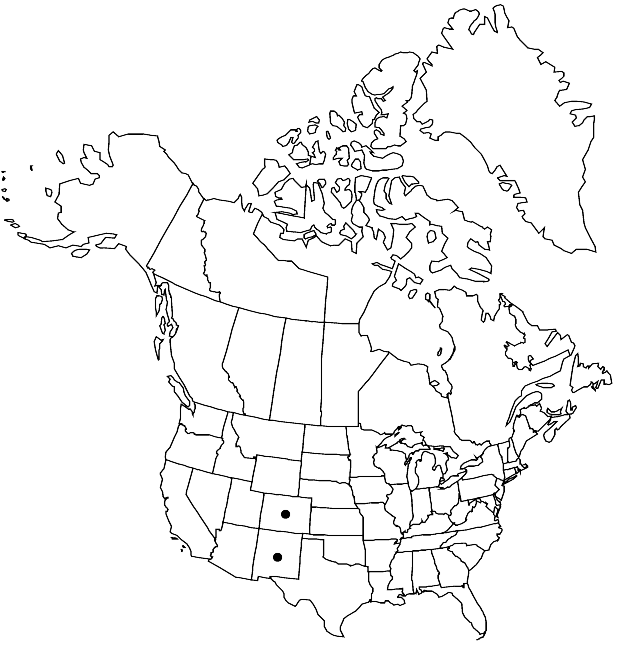Boechera spatifolia
Harvard Pap. Bot. 11: 84. 2006.
Perennials; short to long-lived; sexual; caudex usually not woody (rarely with persistent, crowded leaf-bases). Stems simple or few to several per caudex branch, arising from center of rosette near ground surface, 1.5–3.5 (–5) dm, densely pubescent proximally, trichomes simple mixed with short-stalked ones, 2-rayed, 0.3–0.7 mm. Basal leaves: blade narrowly oblanceolate, 1.5–3 (–4) mm wide, margins entire, strongly ciliate at least along petiole, trichomes (simple), to 1 mm, surfaces glabrous or sparsely pubescent, trichomes simple and short-stalked, 2-rayed, 0.3–0.7 mm. Cauline leaves: 5–15 (–20), often concealing stem proximally; blade auricles 0.5–1.5 mm, surfaces of distalmost leaves usually glabrous. Racemes 10–30-flowered, usually unbranched. Fruiting pedicels horizontal or slightly descending, curved or angled downward, 6–10 (–15) mm, usually glabrous, rarely sparsely pubescent, trichomes spreading, simple. Flowers divaricate-ascending at anthesis; sepals pubescent; petals usually white, rarely pale lavender, 3–3.7 (–4) × 0.5–0.8 mm, glabrous; pollen ellipsoid. Fruits pendent, not appressed to rachis, rarely slightly secund, straight or gently curved, edges parallel, 3.3–5.7 cm × 1.2–1.8 mm; valves glabrous; ovules 90–126 per ovary; style 0.1–0.4 mm. Seeds biseriate, 0.7–0.9 × 0.5–0.6 mm; wing distal or, sometimes, absent, 0.05–0.1 mm wide. 2n = 14.
Phenology: Flowering May–Aug.
Habitat: Rocky slopes and gravelly soil in sagebrush, pinyon-juniper woodlands, open conifer forests and subalpine meadows
Elevation: 1800-2800 m
Discussion
Boechera spatifolia is a sexual diploid that usually has been treated as a variety of Arabis (Boechera) fendleri but appears to be sufficiently distinct to warrant recognition at species level (see M. D. Windham and I. A. Al-Shehbaz 2006 for detailed comparison). There is little geographic overlap between the two, with B. spatifolia confined to the mountains of central Colorado and north-central New Mexico and B. fendleri ranging from western New Mexico and the Four Corners region through northern Arizona to southern Nevada.
Selected References
None.
Lower Taxa
"elongated" is not a number."thick" is not a number."dm" is not declared as a valid unit of measurement for this property."dm" is not declared as a valid unit of measurement for this property.
